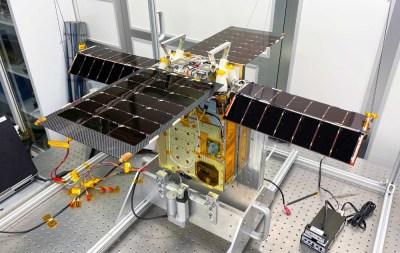With all the recent attention on Mars and the search for evidence of ancient life there, it’s easy to forget that not only has the Red Planet been under the figurative microscope since the early days of the Space Race, but we went to tremendous effort to send a pair of miniaturized biochemical laboratories there back in 1976. While the results were equivocal, it was still an amazing piece of engineering and spacefaring, one that [Marb] has recreated with this Earth-based version of the famed Viking “Labeled Release” experiment.
The Labeled Release experimental design was based on the fact that many metabolic processes result in the evolution of carbon dioxide gas, which should be detectable by inoculating a soil sample with a nutrient broth laced with radioactive carbon-14. For this homage to the LR experiment, [Marb] eschewed the radioactive tracer, instead looking for a relative increase in the much lower CO2 concentration here on Earth. The test chamber is an electrical enclosure with a gasketed lid that holds a petri dish and a simple CO2 sensor module. Glands in the lid allow an analog for Martian regolith — red terrarium sand — and a nutrient broth to be added to the petri dish. Once the chamber was sterilized, or at least sanitized, [Marb] established a baseline CO2 level with a homebrew data logger and added his sample. Adding the nutrient broth — a solution of trypsinized milk protein, yeast extract, sugar, and salt — gives the bacteria in the “regolith” all the food they need, which increases the CO2 level in the chamber.
More after the break…
Continue reading “An Earth-Bound Homage To A Martian Biochemistry Experiment”


















